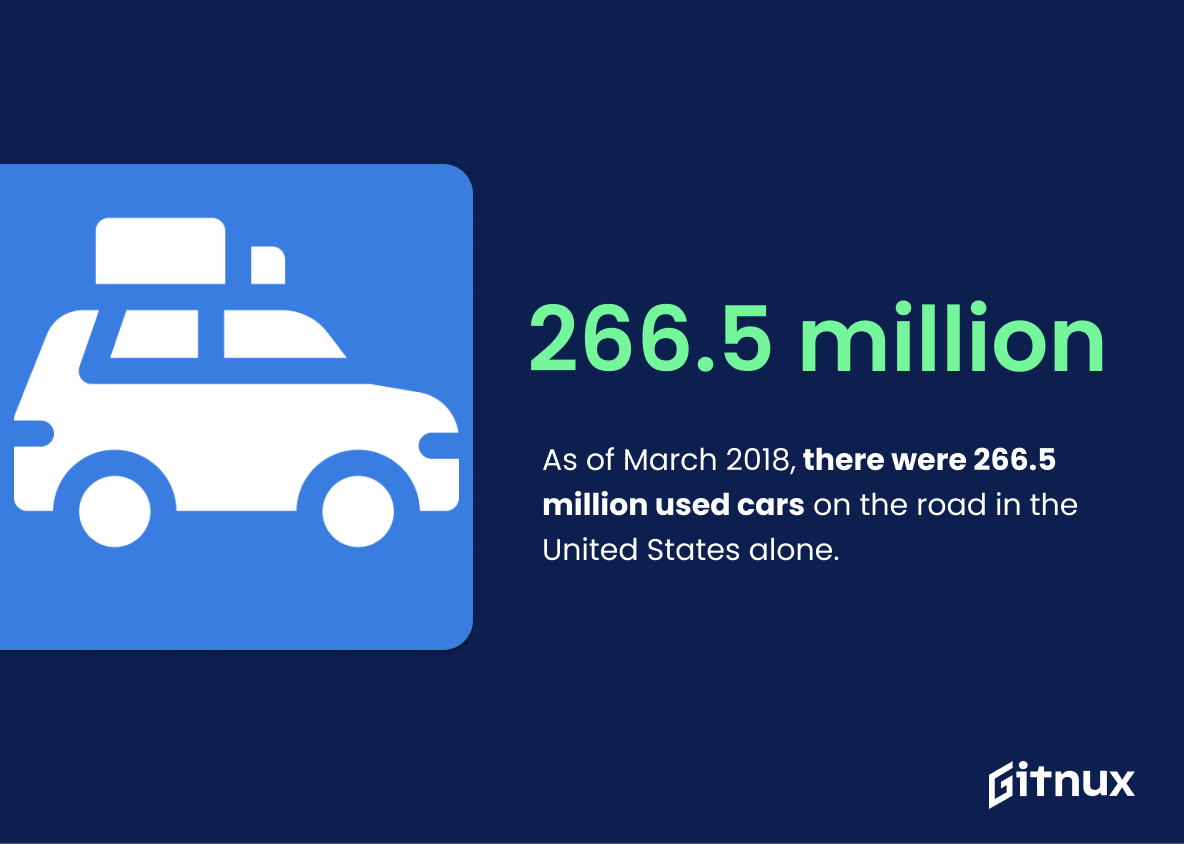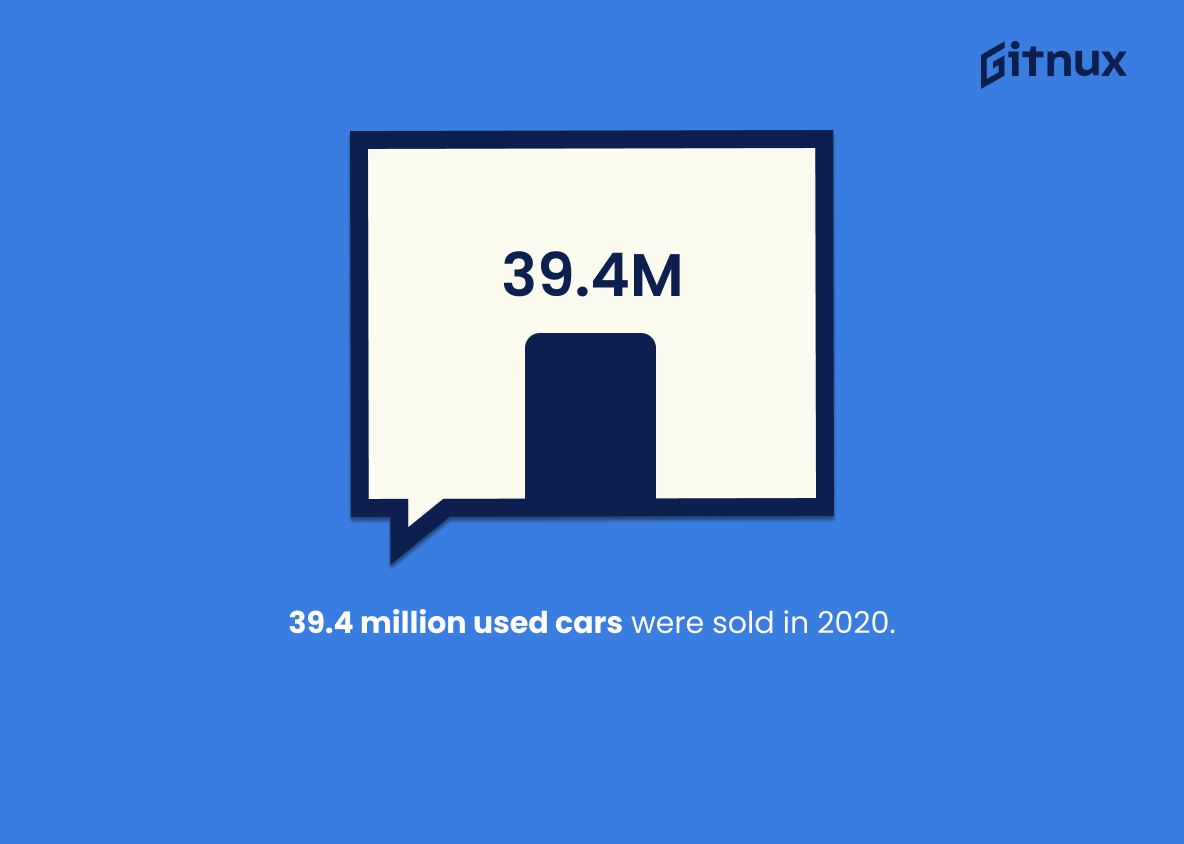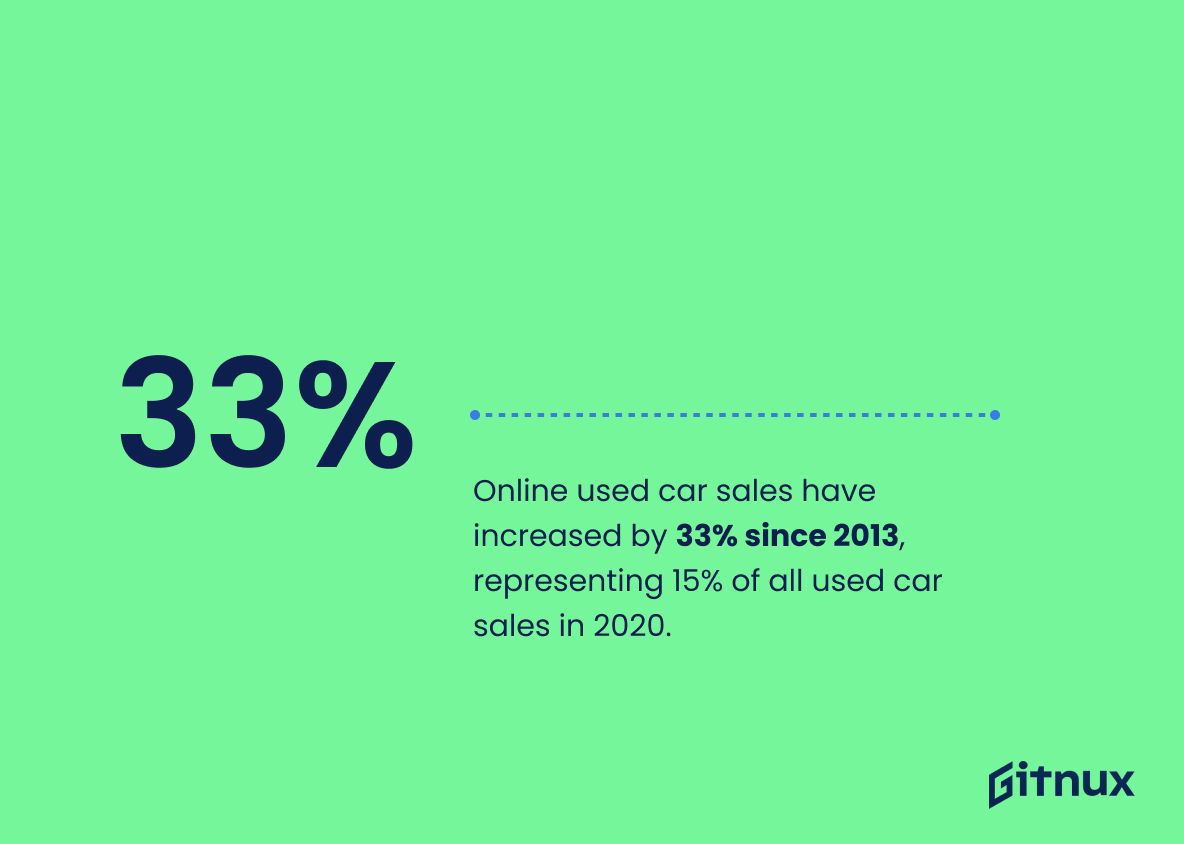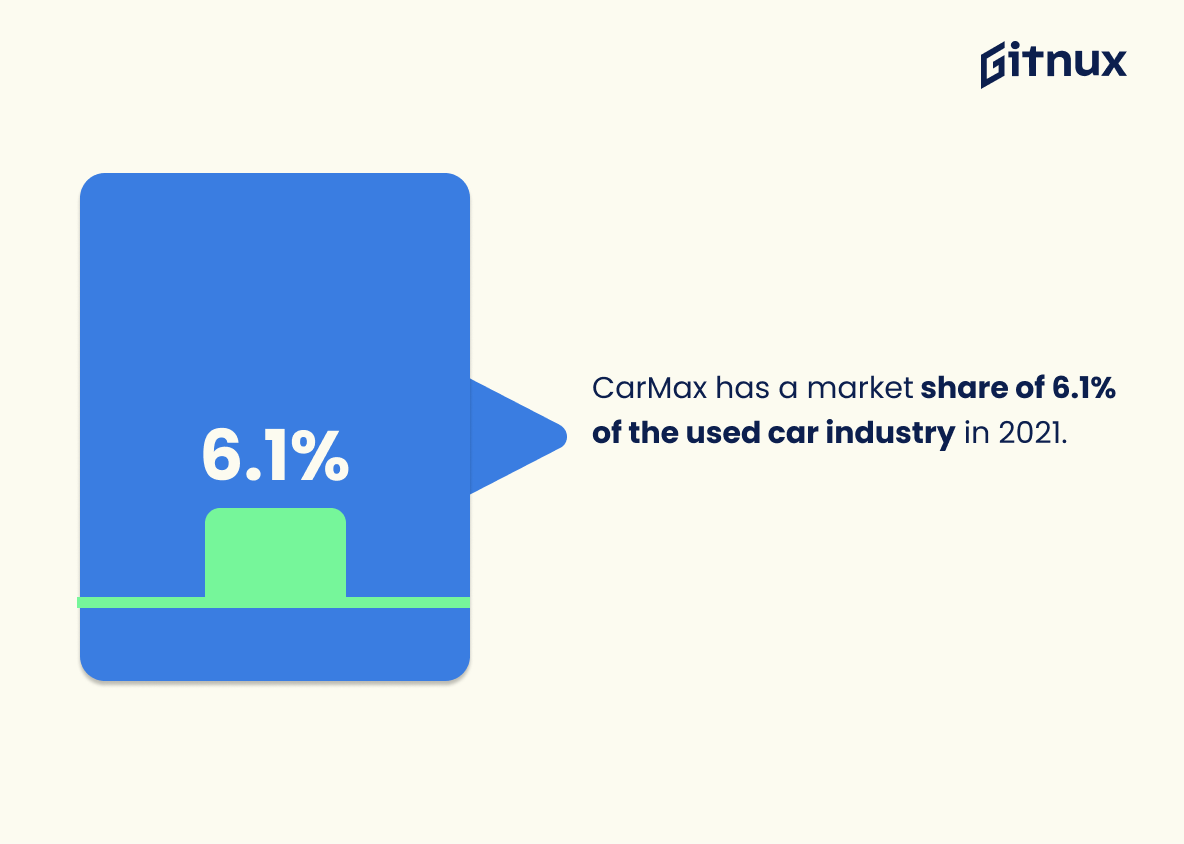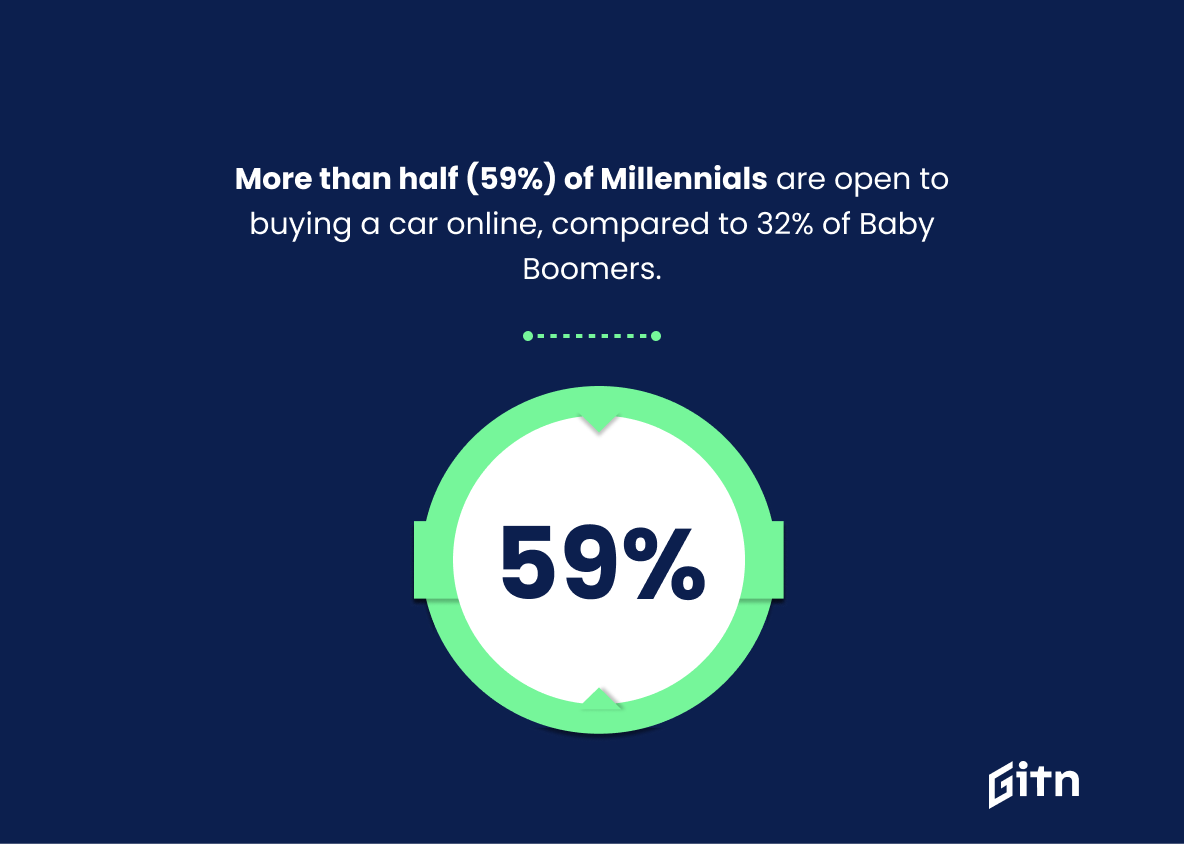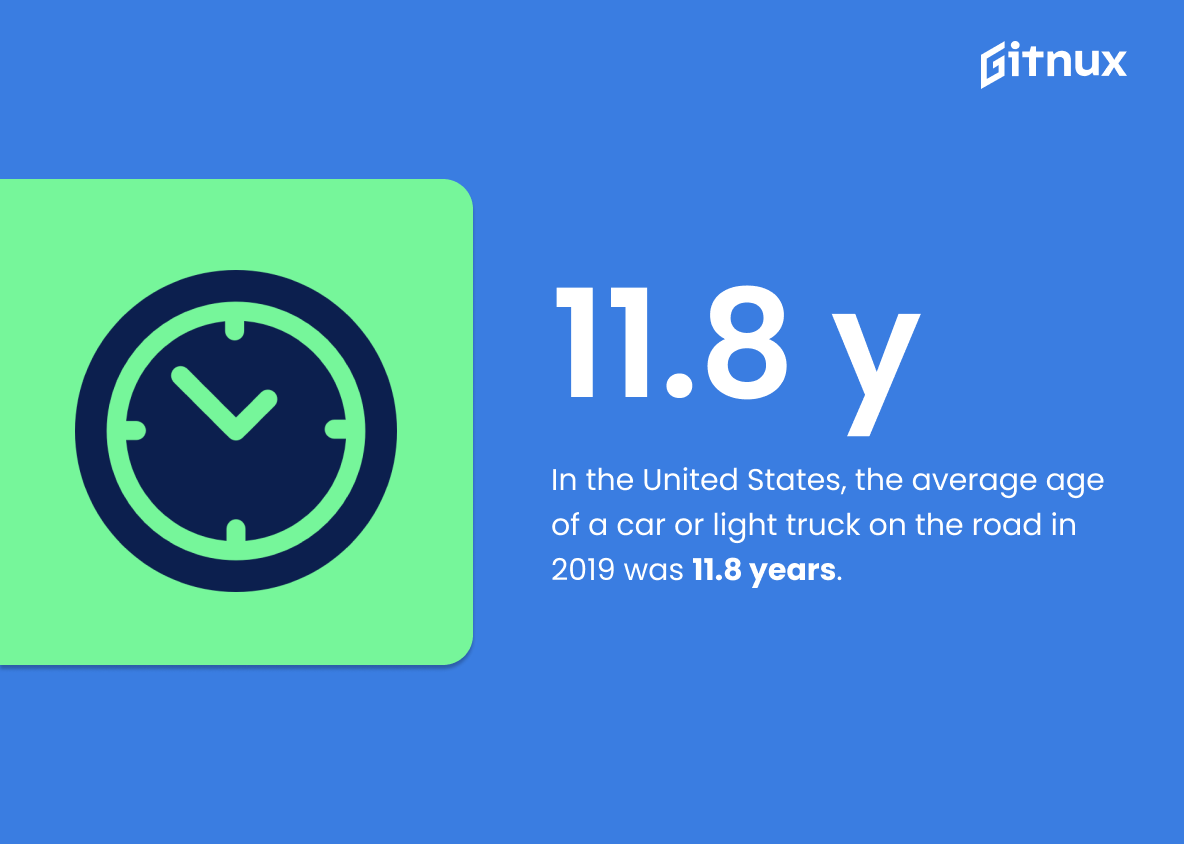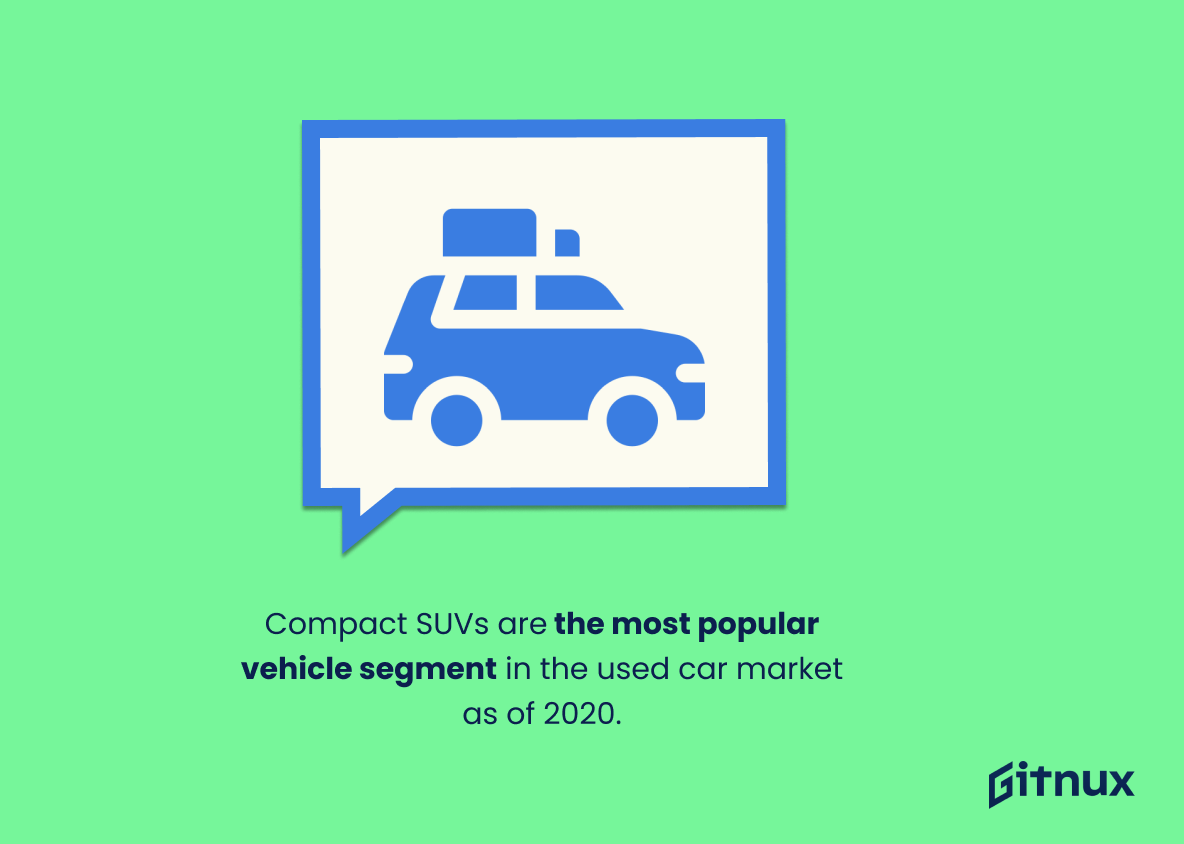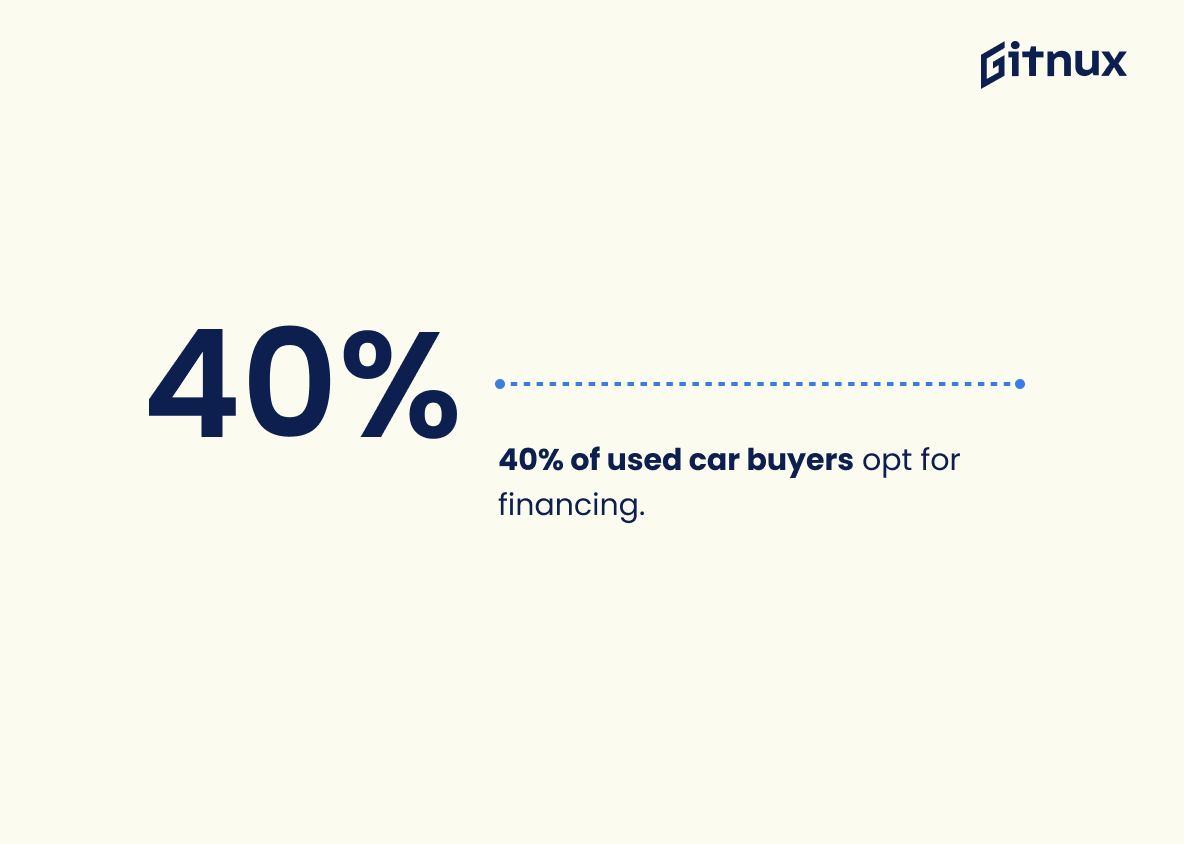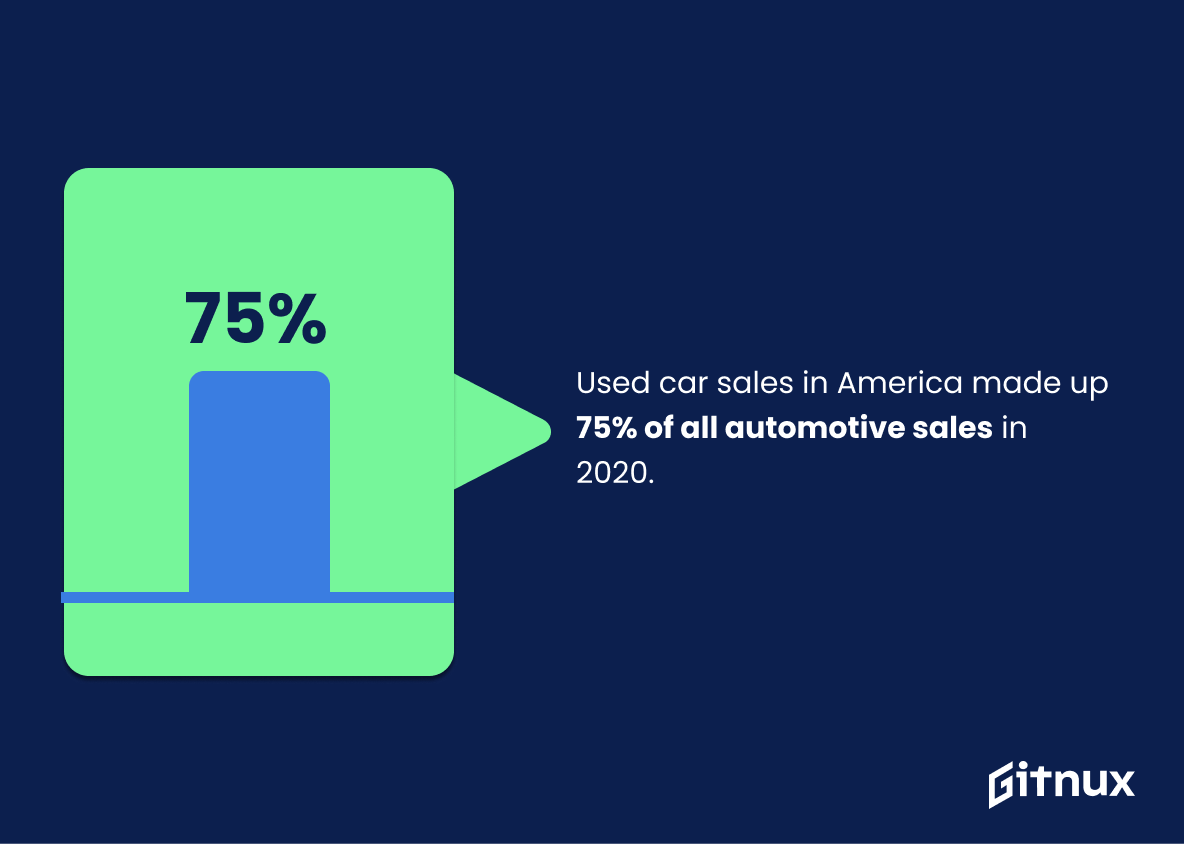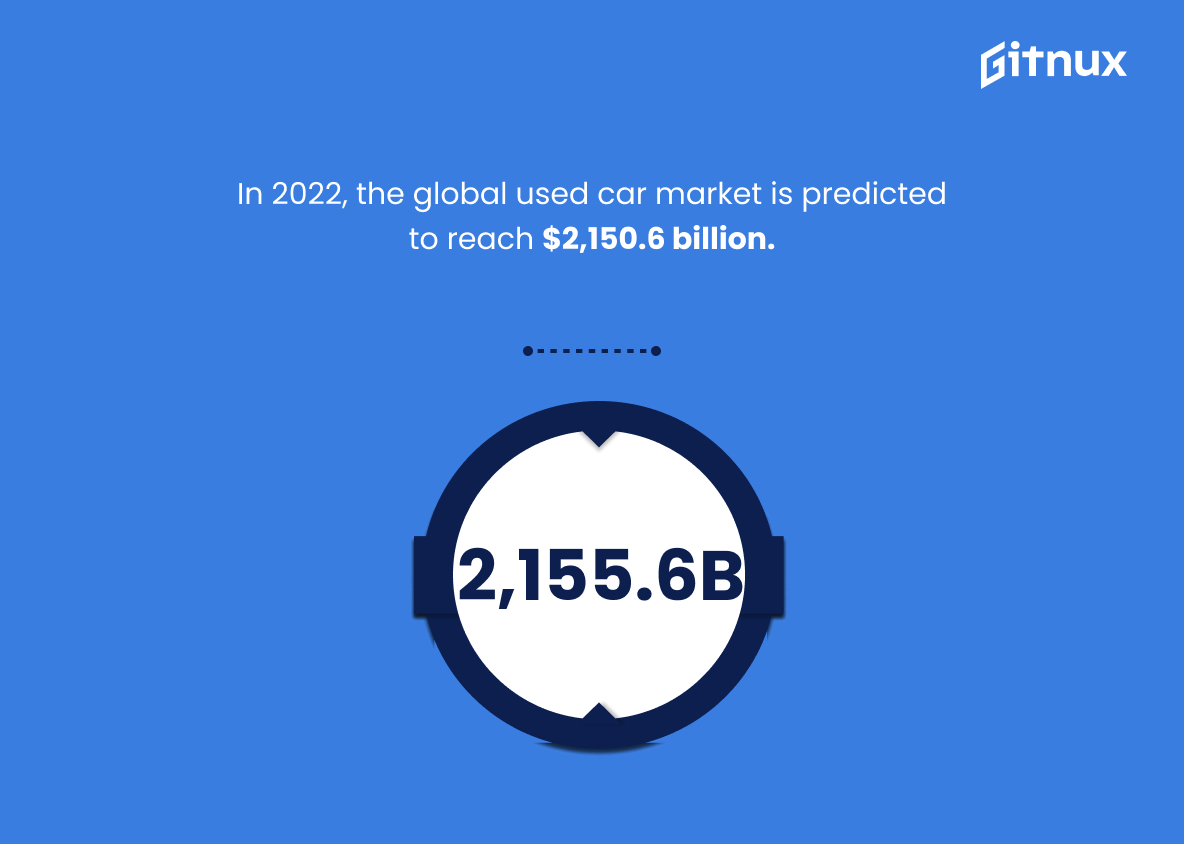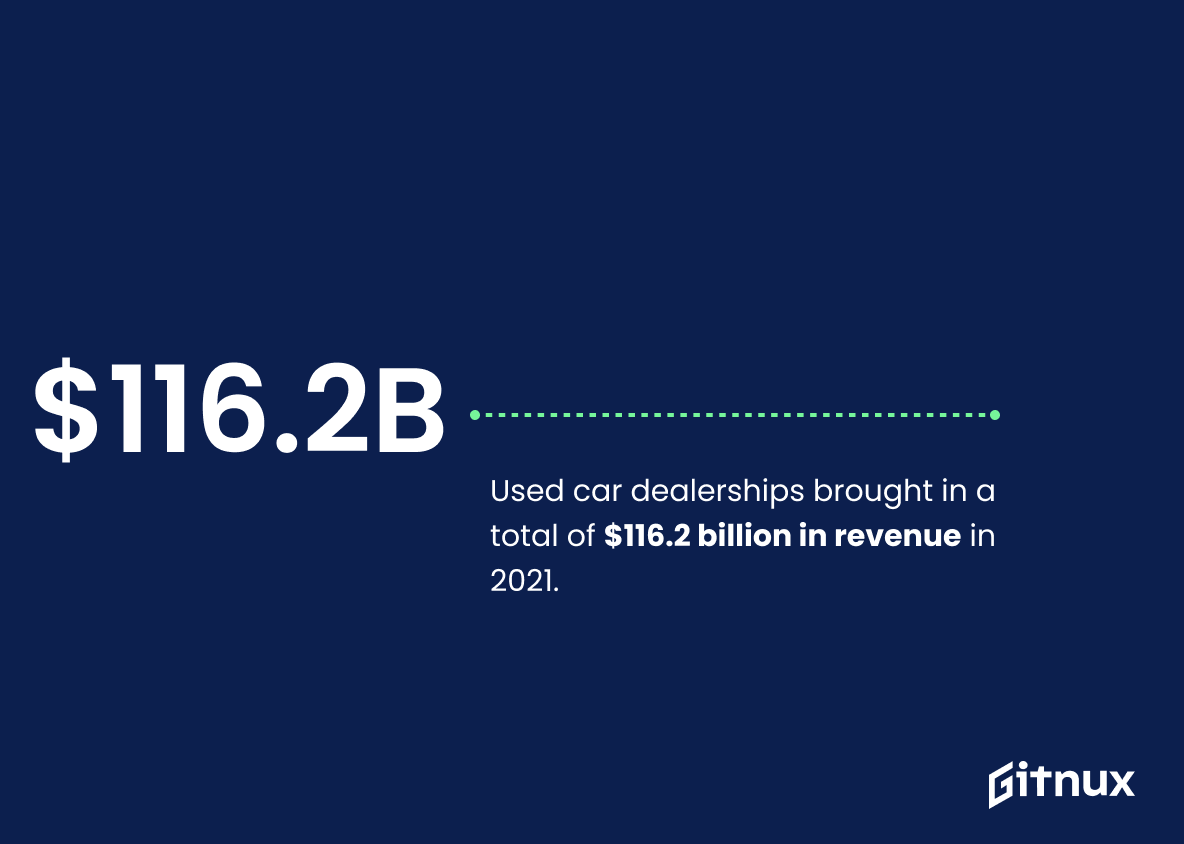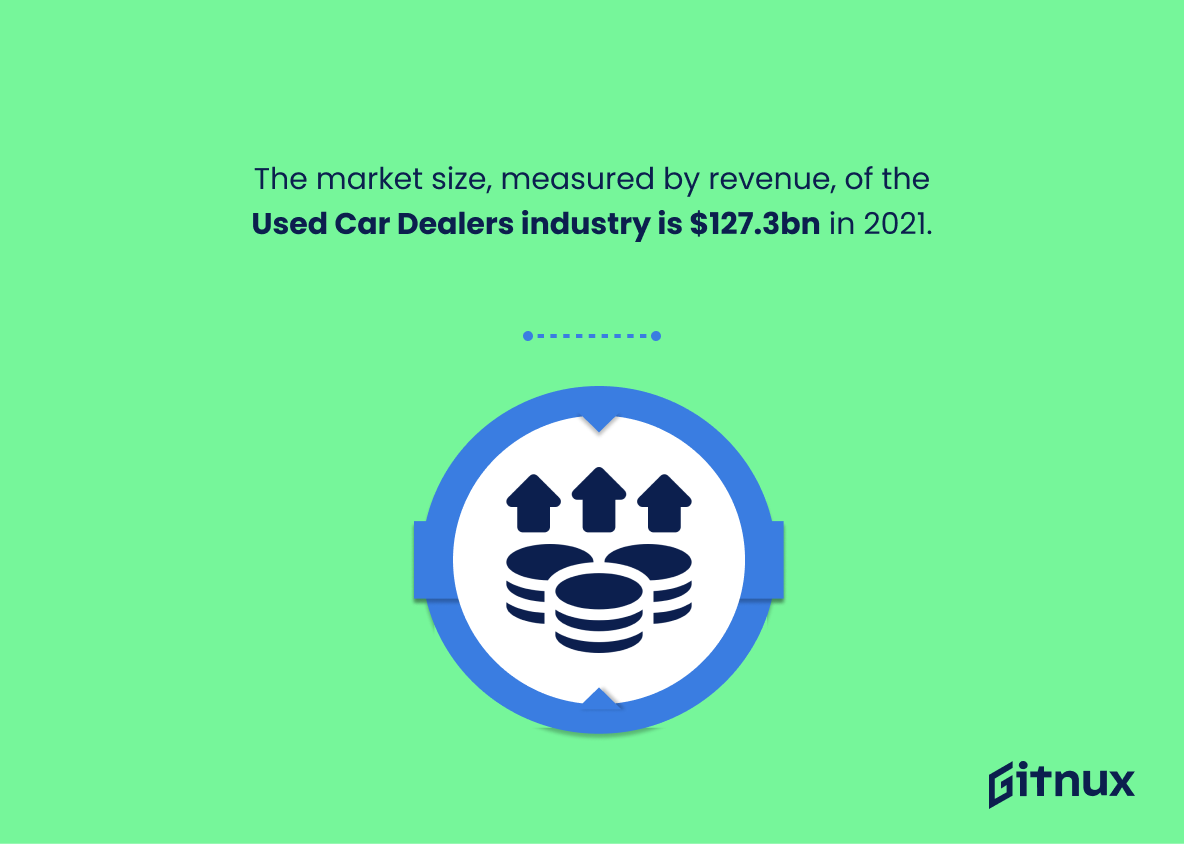Navigating the buzzing world of the used car industry, brimming with endless opportunities, can sometimes feel like a colossal puzzle. In this ever-evolving landscape, keeping an ear to key developments, prevalent trends, and crucial statistics is incredibly vital. In this insightful blog post, we delve deep into the thriving realm of the used car industry, shedding light on cogent statistics and unearthing transformative patterns influencing this dynamic market. Whether you are an automobile enthusiast, a prospective buyer, seller or a market analyst, these intriguing insights into the used car industry will equip you with a comprehensive understanding of its current state, enabling sharper, more informed decisions.
The Latest Used Car Industry Statistics Unveiled
As of March 2018, there were 266.5 million used cars on the road in the United States alone.
Appreciation of the gargantuan tally of 266.5 million used cars prowling the streets of the United States in March 2018 is pivotal when delving into the heart of the used car industry. This astounding statistic sets the stage for understanding the sheer magnitude and influence of the used car market, hinting at the potential lucrative opportunities therein. Also, it may serve as a substantial pointer towards the reliance of American households on used cars. This astounding data also throws light on consumers’ spending habits and preferences, the environmental implications of used cars, and the role of the used car industry in the American economy, weaving a holistic picture of the sector’s significance.
39.4 million used cars were sold in 2020.
The spectacular figure of 39.4 million used cars sold in 2020 doesn’t merely exist as an impressive numerical spectacle. Rather, it commandeers the spotlight, outlining the immense magnitude of the used car industry. It acts as an undeniable testament to the industry’s burgeoning prosperity and the consumers’ escalating trust towards pre-owned vehicles. Furthermore, this imposing number acts as an economic barometer, reflecting both the robust resilience of the used car market amid a challenging year and the potential lucrative opportunities companies can tap into. Undeniably, this statistic captures the flourishing portrait of the used car industry through the lens of numerical data.
Online used car sales have increased by 33% since 2013, representing 15% of all used car sales in 2020.
This piece of statistic lights the way to understanding the digital transformation of the used car industry. Representing a healthy slice of 15% of all used car sales in 2020, online sales have soared by 33% since 2013. What this conveys is the industry’s invigorated agility to adapt to the online marketplace, signifying a shift in consumer purchasing habits and confidence in secure online transactions. Reflecting on these numbers could provide valuable insights for future direction, strategies, and customer engagement within the used car industry. This trend also indicates an apparent opportunity for players in this sector to augment their online presence and supplement traditional sales methods with robust e-commerce platforms.
CarMax has a market share of 6.1% of the used car industry in 2021.
Delving into the heart of the used car industry data, the figure illustrating CarMax’s 6.1% market share in 2021 paints a colorful picture of dominance. This number is not just about percentages— it’s a testament to CarMax’s significant influence among its competitors and a strong reference point for the analysis of market dynamics.
This fact becomes particularly riveting when incorporated into a broader discussion. It aids readers in understanding the degree to which CarMax is gaining traction in a highly competitive world, and provides a benchmark against which the performance of other industry players can be measured. Moreover, it aids in assessing trends over time; a noteworthy ingredient for both market observers and potential entrants to concoct their strategies.
In essence, CarMax’s market share is a statistic that illustrates a broader narrative, a tale of competition, growth and market trends. It’s a data-based storyboard, guiding observers through the labyrinth of the used car industry.
More than half (59%) of Millennials are open to buying a car online, compared to 32% of Baby Boomers.
With the evolution of technology and online retail, the automobile industry is no exception. The given statistic noticeably underlines the shifting preferences towards online shopping for not just clothes or groceries but also for bigger purchases such as cars. In the Internet age, 59% of millennials, who form a substantial consumer base, are showing receptivity towards buying cars online. This lays the foundation for automotive e-commerce, opening up new avenues for digital marketing, virtual showrooms, and direct-to-consumer sales strategies in the used car industry.
Meanwhile, the contrasting figure of 32% from the Baby Boomer generation illustrates the digital divide and the lingering preference for traditional, direct selling methods. This highlights that while the used car industry should indeed move towards digitalizing the buying experience, it must not overlook the significant consumer segment who still value the tangible and personal interactions associated with a car buying experience. It’s an evolving industry scenario that presents a dual challenge – to capture the digital native consumers without alienating the traditional ones.
It stands as a testament to the growing digital inclination while providing a road map for the industry ecosystem players to strategize their customer engagements, either by online or offline means, thereby promising the growth and sustainability of the used car industry.
In the United States, the average age of a car or light truck on the road in 2019 was 11.8 years.
Highlighting the average age of a car or light truck on U.S. roads reflects a thriving used car industry. An 11.8-year average indicates that vehicles are not only maintained and operated beyond their initial few years but also that they are often resold and reused. These ‘living fossils’ on the road are testimony to a robust second-hand vehicle market. Furthermore, this stat reveals an undercurrent of consumer behavior where keeping or buying older cars is a popular choice, boosting the used car industry’s prosperity. It provides potential avenues for the segment to grow, signaling profitable opportunities for businesses from trade-ins, reselling, to parts and services.
Compact SUVs are the most popular vehicle segment in the used car market as of 2020.
Delving into this compelling statistic gives us a detailed understanding of buyer preferences and trends in the used car industry. The preference for Compact SUVs shows a distinctive shift towards vehicles that offer the practicality of an SUV but remain manageable in city driving, combining optimum space utilization with fuel efficiency. This information is crucial for stakeholders, such as used car dealers, manufacturers, and potential buyers, to make informed decisions. Moreover, it offers a pivotal perspective for future predictions and can enrich marketing strategies in the competitive used car market. This statistic is a rudder navigating the industry’s currents and winds.
40% of used car buyers opt for financing.
Unraveling the threads of the used car industry, one finds a fascinating feed of information. A compelling illustration is the dimension where 40% of used car purchasers elect financing. This figure stands as a testament to the ever-evolving consumer dynamics and purchasing preferences, fundamentally influencing the operational and strategic bearings of the industry. Drawing from this statistic, industry players can expeditiously tailor suitable financial models, refine marketing strategies, and advance customer engagement. It also underscores the unearthing of a crucial economic substructure within the used car market – a niche for financial institutions and lenders to dive into. Therefore, the number is not only a fact, but an opportune landmark shaping the used car industry’s landscape.
Used car sales in America made up 75% of all automotive sales in 2020.
Painting a vivid picture of the used car industry in 2020, this remarkable statistic reveals a dominant shift towards used vehicles within the American automotive market. Imagine three out of every four cars sold rolling off the lot as a used model: an overwhelming majority that underscores the significant foothold that second-hand auto sales have captured. Conveying more than just numbers, this powerful percentage attests to noteworthy consumer confidence, resourcefulness, and economic pragmatism, all driving factors behind the booming used automotive market. Moreover, understanding such data unlocks a deeper curiosity about the factors that may be steering this trend including affordability, sustainability, and the ever-growing demand for vehicles amidst the fluctuations of new car production.
In 2022, the global used car market is predicted to reach $2,150.6 billion.
Highlighting the anticipated value of the used car market to be $2,150.6 billion in 2022 offers profound insights into the scale and potential of the industry. It alludes to a thriving and robust sector, suggesting vast opportunities for businesses, traders, and investors. This figure not only encapsulates the promising prospects of the market but also underscores the increasing customer preference for used cars. Therefore, threaded throughout this statistic is a narrative of global trends, consumer behavior and industry growth, starkly painting a vision of the used car landscape in the near future. Furthermore, it can help stakeholders tailor their strategies to leverage this blooming market evolution.
A used car sits on a dealer’s lot for an average of 33.4 days before being sold.
Highlighting the fact that a used car typically remains on a dealer’s lot for an average of 33.4 days provides valuable insights into the dynamics of the used car market. It paints a clear picture of the turnover rate in sales, crucial information for both dealers looking to optimize their inventory management and buyers trying to understand the negotiation room they may have. For dealers, this punctuates the importance of stocking desirable models, pricing competitively, and utilizing effective sales strategies. Meanwhile, potential buyers might interpret longer sitting times as a signal that there could be more room for negotiation on price. In essence, this figure sets the tempo for how the used car industry operates.
Around 28% of second-hand cars are sold with some unresolved issue.
In the lively world of the used car industry, a critical nugget of wisdom to digest is the fact that approximately 28% of pre-owned vehicles change hands with lingering unresolved issues. This intriguing statistic paints a vivid picture of the possible pitfalls awaiting unsuspecting consumers. Thus, spotlighting the importance of comprehensive vehicle checks and reinforcing the necessity for regulations that protect both buyers and sellers. The numeric truth serves as a valuable beacon, guiding industry players to refine their processes and inspiring consumers to approach used car purchases with a discerning eye.
Used car dealerships brought in a total of $116.2 billion in revenue in 2021.
Painting a vivid portrait of the used cars industry financial landscape in 2021, the towering revenue figure of $116.2 billion underscores the strong economic pulse driving this sector. This fiscal heavyweight isn’t just a number, but a testament to both the health of the industry and the robust consumer demand that fuels its engine. When unraveling the intricacies of the used car industry, this revenue sum echoes the significant role this market plays in the larger automotive sphere and the economy as a whole. This enormity of income generation highlights the continued relevance and commercial activity within the used car industry, revealing it not only as a thriving trade but also a potent investment arena.
Ford is the most popular brand in the used car market in the United States.
Highlighting the dominance of Ford in the used car market of United States becomes significantly essential when exploring the landscape of used car industry statistics. It showcases consumer preferences and trust, setting a benchmark for reliability and resale value. Additionally, it provides valuable insights to competitors, on key market leaders and their consumer acceptance, which can be utilized to strategize their own position in the market. Finally, it can also signal prospective buyers about a potentially good investment, reinforcing Ford’s image as a preferred brand among Americans. This ripple effect of one statistic can influence various aspects of analysis, decision-making and strategic planning in the used car industry.
The market size, measured by revenue, of the Used Car Dealers industry is $127.3bn in 2021.
Capturing the depth and magnitude of the Used Car Dealers industry is this awe-inspiring financial figure: a whopping $127.3 billion in revenue as of 2021. This towering number not only underlines the financial strength and vitality of the industry, but also illustrates the vast growth opportunities in this arena. In the context of our discussion on the Used Car Industry Statistics, this robust revenue estimate serves as a fiscal beacon of prosperity, shining a light on the industry’s increasing economic muscle, and demonstrating its immense contribution to the global economy. When broken down, this monumental figure also suggests a thriving customer base continually fuelling this economic engine, pointing to possibilities of increased demand and potential for more substantial revenue generation in the future.
On average, a car is owned for 71.4 months before it’s sold as a used vehicle.
Examining the average ownership duration of a car before it’s sold as a used vehicle – the commonly cited 71.4 months – sheds invaluable light on several critical aspects of the used car industry. Firstly, it provides a benchmark for the life cycle of a vehicle’s first ownership period, highlighting typical ownership patterns which can be leveraged by car dealers to anticipate supply of used vehicles. Secondly, it manifestly reveals consumer behavior, which can be instrumental in developing marketing strategies, particularly around timing when potential customers might be considering changing their vehicles. Lastly, by understanding this duration, other stakeholders such as maintenance and repair shops, insurance companies, and manufacturers can efficiently fine-tune their business strategies, gearing their efforts towards the consistently evolving needs of car owners within this 71.4-month timeframe. Undeniably, this statistic sits at the heart of the used car industry’s trading rhythm, subtly influencing each move.
Roughly 45% of the used cars sold in 2020 were between 1 and 5 years old.
Delving into the world of used car industry, it’s fascinating to unveil that roughly 45% of the used cars sold in 2020 were merely between 1 to 5 years old. Indeed, this intriguing figure sheds light on the vivacious market dynamics and consumer trends. Primarily, it reveals the strong appetite amongst buyers for relatively new second-hand cars, ostensibly considering factors like advanced technology, lesser maintenance, and reliability. Consequently, it may compel businesses within the industry to reassess their inventory management and acquisition strategies, keeping in line with this youthful zest. Additionally, this crucial information may also hint towards the potential depreciation rate of newer cars, thus serving as a pivotal consideration for both buyers and sellers. Hence, with such a substantial portion of the market skewing towards younger used cars, industry players are bound to stay alert and adapt, reinforcing the relevance of this statistic.
From 2018 till 2019, China’s used car sales increased by 7.9% to 14.8 million.
This intriguing spike in China’s used car sales, reflecting a 7.9% jump from 2018 to 2019 and attaining a staggering volume of 14.8 million, thrusts an enlightening perspective onto the trajectory and vibrancy of the global used car industry. Notwithstanding just the sheer numerical growth, this surge underscores China’s evolving consumer patterns and their increasing comfort towards previously-owned vehicles, fostering a market ripe for both domestic and foreign investment. As one ruminates over this blog post on Used Car Industry Statistics, this numeric surge sets a compelling backdrop to understand the potential market dynamics, growth opportunities, and consumer tendencies in the burgeoning used car industry.
Conclusion
The used car industry, bolstered by an array of intriguing statistics, presents compelling evidence of its dynamic growth and evolution. Be it the increasing sales figures, the flourishing online marketplaces, the declining new car sales, or the crucial economic impact, the significance of the used car market is unquestionable. More importantly, the industry’s resilience, especially evident in the face of global challenges, heightens the anticipation of even greater advancements in the future. As consumers continue to value financial prudence alongside the desire for mobility, the used car industry remains poised to navigate the pace of change, driving towards a more sustainable and inclusive automotive future.
References
0. – https://www.www.edmunds.com
1. – https://www.www.autolist.com
2. – https://www.www.digitaldealer.com
3. – https://www.www.chinadaily.com.cn
4. – https://www.www.ibisworld.com
5. – https://www.www.autoremarketing.com
6. – https://www.www.statista.com
7. – https://www.www.alliedmarketresearch.com
